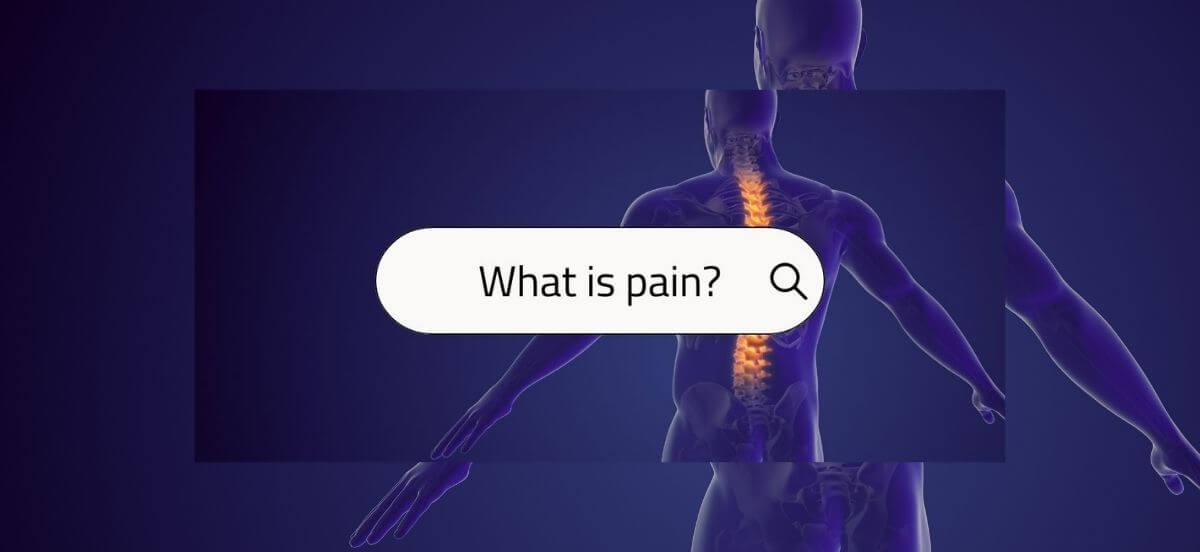
“What is pain?” or “Why do I have pain?” are two questions I receive often when working with patients. As stated in the last blog on back pain, pain is a complex and multifaceted experience that affects almost everyone at least one point in their life. The International Association for the Study of Pain defines pain as, “An unpleasant sensory and emotional experience associated with, or resembling that associated with, actual or potential tissue damage (1).” It is an essential function of our brain to produce pain to warn us that something may be wrong and in turn gives us the opportunity to stop what we are doing to prevent further harm. However, it is much more complicated than that and everyone’s pain experience is unique to them at that moment.
Much of what we know about pain was established many years ago in 1644 by a scientist named Rene’ Descartes (2). It is known as the Cartesian model and this model proposed that pain messages are detected by receptors in the body and sent to the brain. These pain messages make us aware of a problem so we can act to reduce further harm. Therefore, it was a rather simple sensory experience of having an external stimulus such as feeling a hot pan with our hand and the receptors in our hand alerting our brain through our nervous system there is something harmful and we should pull our hand away to reduce further injury. Only if pain were truly that simple.
This model separates the mind and the body and focuses only on the physical aspect of pain, but as I stated earlier, pain is a complex and multifaceted experience that is unique to each individual. Pain can be experienced when nothing dangerous exists in that moment. Let’s take phantom limb pain for example: A person who received a below-knee amputation can experience pain in their foot that is no longer there. Thus meaning there is more to pain than just a physical phenomenon.
Modern pain science now states that pain exclusively comes from the brain. The brain receives stimuli and determines how to interrupt those incoming messages and whether it should produce a pain response, movement, or a stress response (feeling of anxiety) (2). However, the stimuli coming into the brain are not always just external physical inputs but are also cognitive and emotional inputs. This is referred to as the neuromatrix which is a network of neurons with multiple inputs and outputs all coming into and out of the brain (2). This includes things you touch, see, hear, and smell as well as your emotions and feelings at that moment. In this model, pain is the output of what the brain produces from the messages received verses with the Cartesian model, pain is the input and comes from the body.
This is what makes pain so complex and individualized. An acute injury can occur such as a sprained ankle but that person’s experience of that injury at that moment as well as throughout the recovery process is what will contribute to their healing outcomes. Acute pain is defined as pain that comes on suddenly and goes away in less than 12-weeks and chronic pain is defined as any pain that occurs for more than 12-weeks (2). Someone who has broken a bone in their arm will likely heal in less than 12-weeks, but may continue to experience pain far beyond the healing stage of that bone. Meaning that the brain is still producing a pain signal, interpreting something to be harmful even though the bone has already healed.
Each person’s pain experience is shaped by their thoughts, emotions, beliefs, memories, stress levels, and the sensations they feel. If someone is going through a stressful time in their life causing them to not eat well or get enough sleep, this can significantly affect their healing and pain experience. The pain someone is going through may be associated with a specific experience they had at a particular time in their life such as a family member passing away or dealing with a certain traumatic event. This is why pain is so complex and why when people who experience chronic pain should have a multi-dimensional approach to their care. When it is said that pain comes from the brain, they are not saying that it is all in your head, but it is your personal experience with pain and how your brain interrupts it at that time contributing to the output messaging your central nervous system tells your body.
In our upcoming blog, we will break down chronic pain further and what all affects our individual pain experience as well as ways we can help treat it. Whether you or someone you know suffers from occasional aches and pains or lives with chronic pain, this blog series will be a must-read for anyone seeking to better understand the science of pain. You can sign up to receive our newsletter here so you don’t miss this series.
To help better understand your pain and how to treat it, request an appointment with any of our qualified physical therapists to help you get back on the road to recovery. Please click the link below or call any of our locations.
Resources
- Malik NA. Revised definition of pain by International Association for the Study of Pain: concepts, challenges and compromises. Anesthesia, Pain & Intensive Care. 2020:24(5).
- Walters, Tom. (2023) Rehab Science: How to Overcome Pain and Heal from Injury. Victory Belt Publishing Inc.
